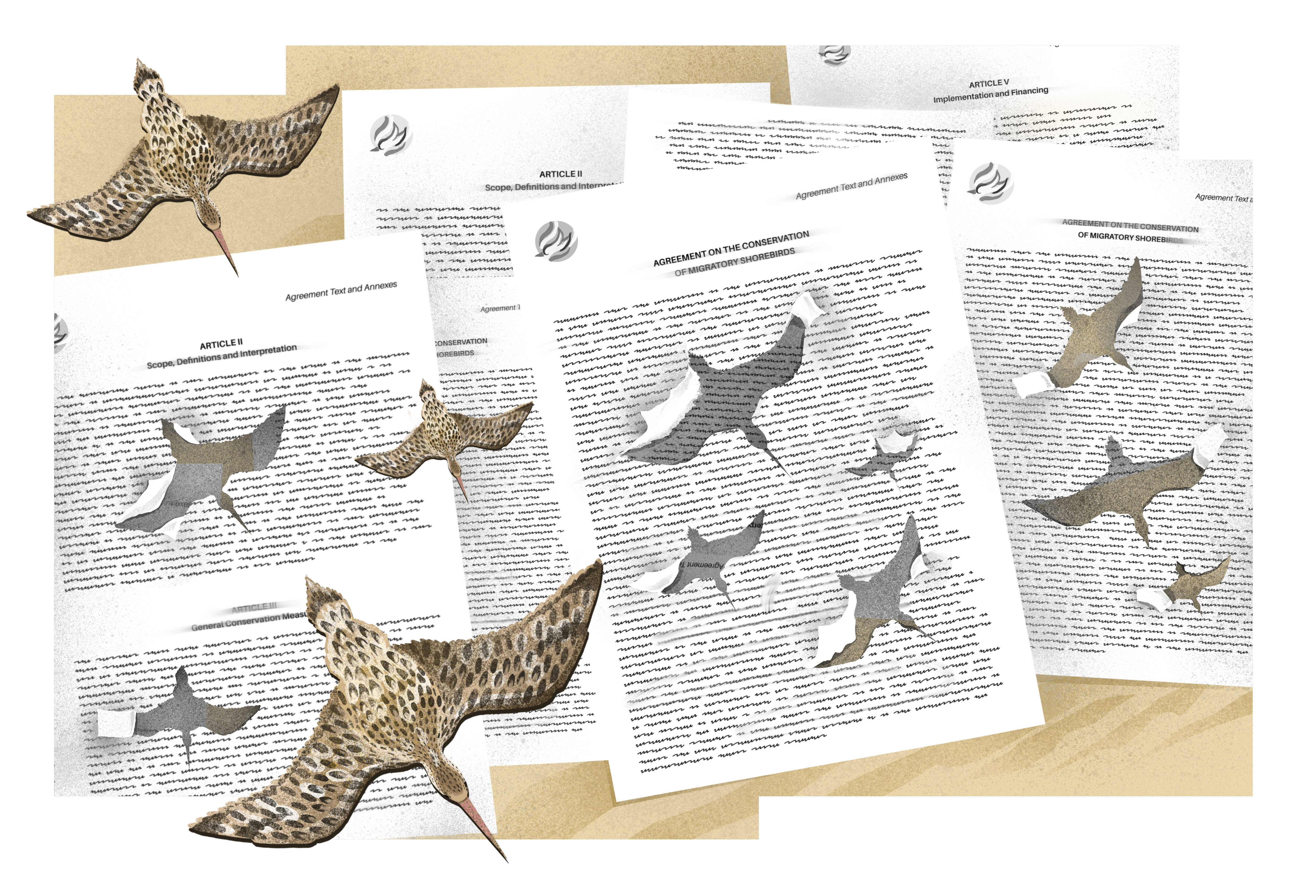Migratory shorebirds are the ultimate globetrotters. Each year, they repeat a cycle of breeding primarily at high latitudes in the northern hemisphere and migrating south when winter hits. These bird populations are generally declining, with some species listed as threatened and at least one as extinct. It is clear that international cooperation for their conservation is needed given their vast movements and multiple threats. However, while multiple international agreements have been negotiated for their conservation, evaluation of such conservation tools has generally lagged. Without such assessments, we do not know whether these agreements are effective at all on achieving their conservation goals, and how they can be potentially strengthened.
International agreements are a well-known fixture of migratory shorebird conservation in the Asia-Pacific, a region also known as the East Asian-Australasian Flyway (EAAF). So, a look at these agreements in the EAAF may provide clues to inform ways to advance the conservation of these birds. There are now 28 such international agreements across the flyway. Against this backdrop, a key question relevant to conservation is whether this set of agreements covers the full life cycle of migratory shorebirds within the flyway relative to their threats. With two pressing and imminent threats to migratory shorebirds in the EAAF, namely habitat loss and hunting, we studied what such agreements cover, how they enable coordination, and how well they protect the flyway by country and shorebirds’ migratory cycle. Our research adopted a network analysis approach drawing on membership to international agreements, as well as on where shorebird species occur and how they move from country to country.
Encouragingly, we discovered that the sets of agreements for addressing habitat loss and hunting cover the entire flyway, though with some variations. First, there are more agreements for habitat conservation than for hunting management. Second, agreements for the former include a variety of members, such as national governments, intergovernmental organisations and non-governmental organisations, whereas members were restricted to national governments in hunting management agreements.
Third, the agreements around habitat conservation were built into a more resilient and robust network given by redundancy and reinforcement of connections among members, while those for hunting management resulted in a weaker network given by fewer connections. The East Asian-Australasian Flyway Partnership emerged as the most central habitat conservation agreement in this flyway. Notably, there is no agreement in place for flyway-wide coordination of hunting management. Lastly, agreements for habitat conservation covered more thoroughly the migratory cycle of shorebirds than those focused on hunting management.
Many of these agreements have emerged as a response to conservation pressures, such as coastal reclamation. However, it is important to acknowledge that each new agreement draws personal energy, political attention and financial resources for negotiation. So, shorebird conservationists should ask themselves if any additional agreements are worthwhile, considering there are already 19 agreements for habitat conservation and 16 for hunting management within this flyway.
Taking into account the limited resources available for conservation, such as capacity, funding and political bandwidth, we recommend that the habitat conservation issue requires no further agreements, but does need a much stronger focus on implementation. Conversely, while implementation of existing agreements for hunting management is important, a central coordinating agreement is still lacking. Hunting management needs to account for flyway-wide mortality and quota allocations per country, which are currently non-existent so a new agreement is needed.
Ultimately, international agreements for conserving migratory species need to be evaluated for the degree to which they fit the threats at hand. With such evaluations, conservationists need to make hard decisions on whether the focus should be on implementation or on addressing gaps by negotiating new agreements.
Further Reading
Gallo-Cajiao, E., T. H. Morrison and R. A. Fuller. 2024. Agreements for conserving migratory shorebirds in the Asia-Pacific are better fit for addressing habitat loss than hunting. Ambio 53: 1336–1354. https://doi.org/10.1007/s13280-024-02018-3.






